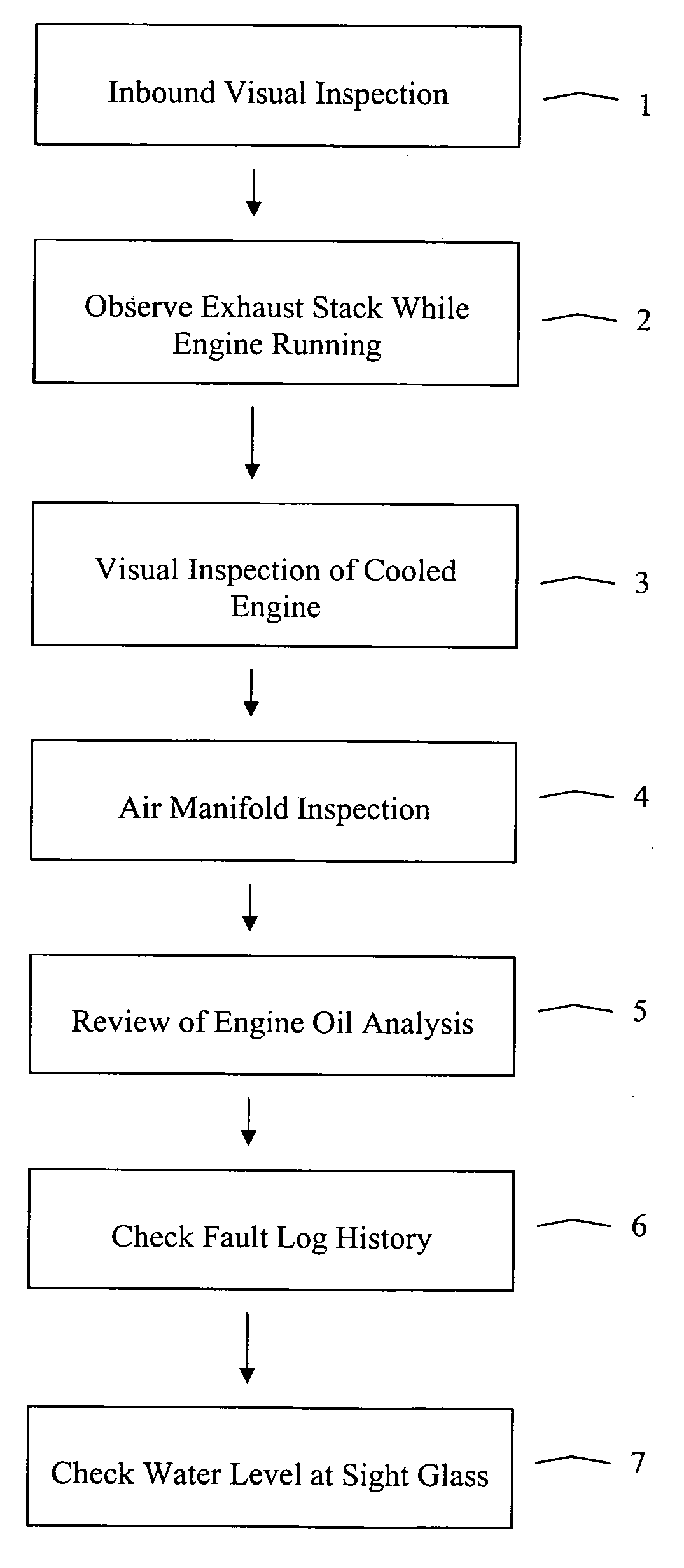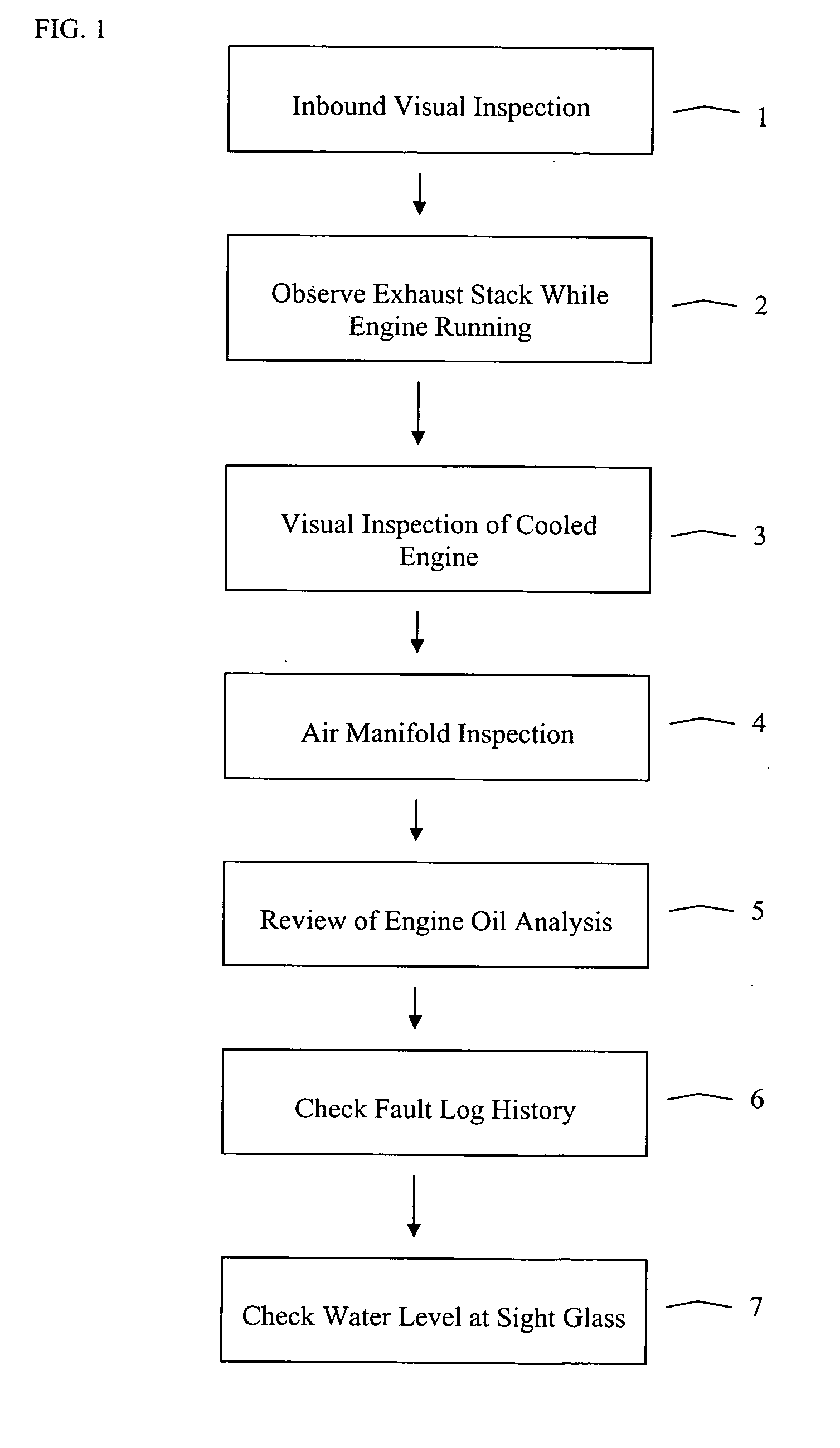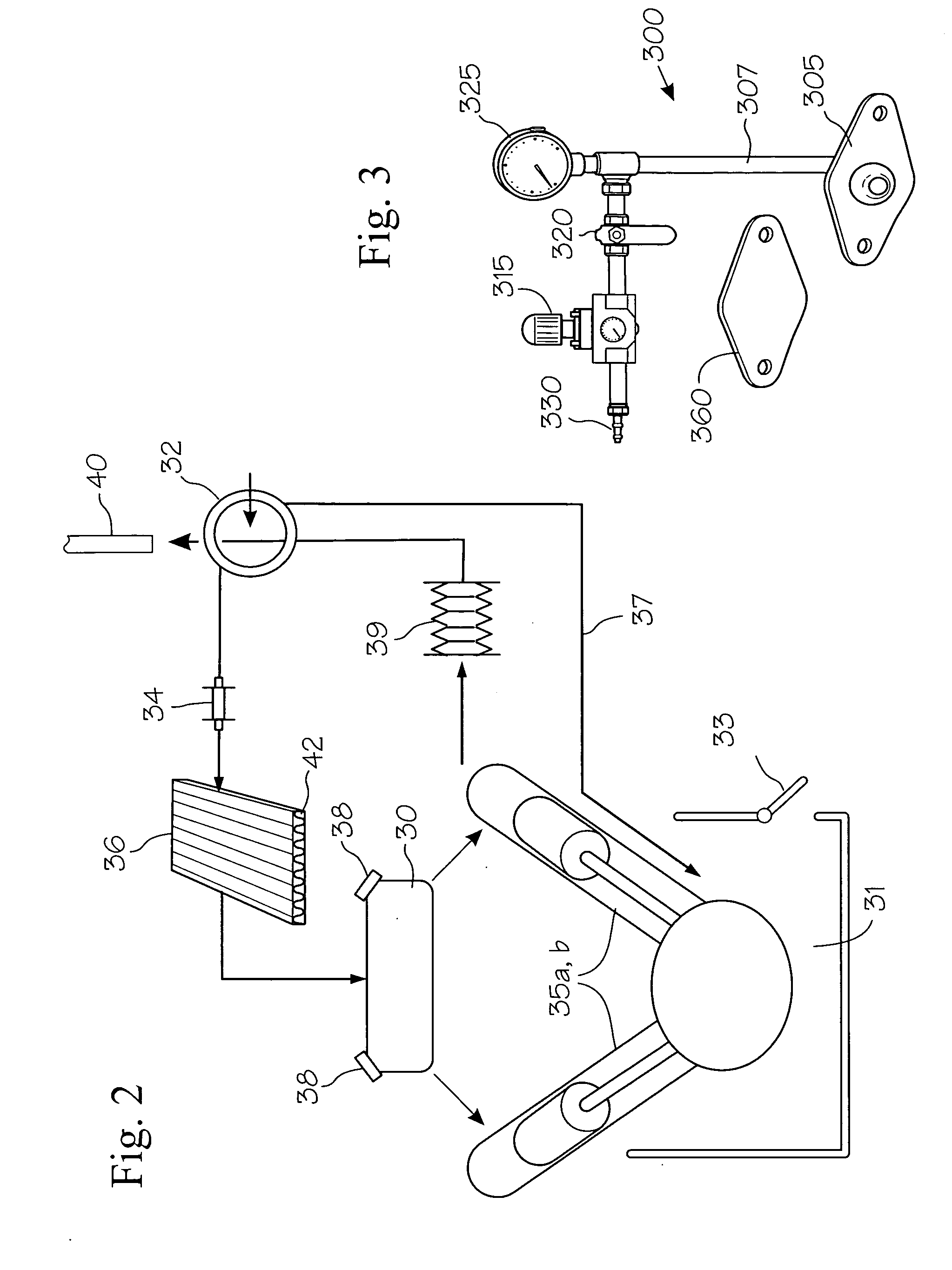Method of detecting a water leak in a locomotive
a technology of locomotives and water leaks, applied in the direction of measuring devices, structural/machine measurement, instruments, etc., can solve the problems of a variety of locations where water leaks have been known in a locomotive, and the repair of engine components, particularly engine power assemblies, is a costly and time-consuming matter
- Summary
- Abstract
- Description
- Claims
- Application Information
AI Technical Summary
Problems solved by technology
Method used
Image
Examples
Embodiment Construction
[0008] The present inventors have found that a high percentage of the power assemblies that are removed from locomotive engines for water leak repairs based on the commonly accepted “squeeze test” were not in fact actually leaking once they are disassembled and fully inspected. The inventors believe that such power assemblies are removed in error because the prior art water leak detection process is not capable of accurately determining the source of a water leak detected during a squeeze test. In particular, the inventors have found that water leaking from within a locomotive engine may migrate within the engine to reveal itself at a location remote from the actual source of the leak. Such transient water may then be misinterpreted as an indication that a watertight component is leaking.
[0009] In addition, the “squeeze test” is done under static conditions (i.e., with no flow of water through the engine) and typically at cold (as opposed to normal operating) temperature engine con...
PUM
 Login to View More
Login to View More Abstract
Description
Claims
Application Information
 Login to View More
Login to View More - R&D
- Intellectual Property
- Life Sciences
- Materials
- Tech Scout
- Unparalleled Data Quality
- Higher Quality Content
- 60% Fewer Hallucinations
Browse by: Latest US Patents, China's latest patents, Technical Efficacy Thesaurus, Application Domain, Technology Topic, Popular Technical Reports.
© 2025 PatSnap. All rights reserved.Legal|Privacy policy|Modern Slavery Act Transparency Statement|Sitemap|About US| Contact US: help@patsnap.com



